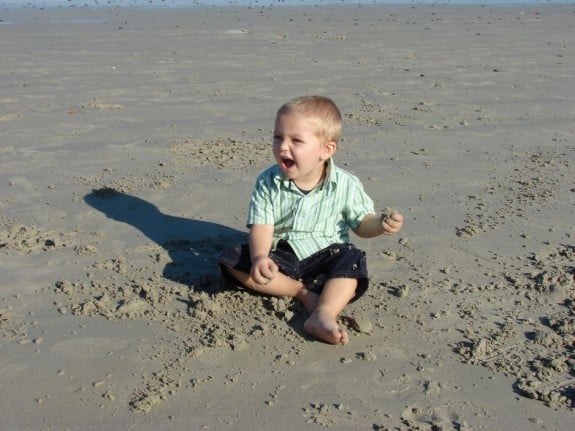Shade your kids. Strong new evidence suggests overall sun exposure in childhood, not just burns, is a big key to who later develops deadly skin cancer. The news comes as the U.S. government is finishing long-awaited rules to improve sunscreens.

The FDA is looking for sunscreens to be rated not just for how well they block the ultraviolet-B rays that cause sunburn — today’s SPF rankings — but for how well they protect against deeper-penetrating ultraviolet-A rays that are linked to cancer and wrinkles.
Melanoma is the most lethal skin cancer. It will strike almost 60,000 Americans this year, and kill some 8,100. Cases have been on the rise for three decades, and while it usually strikes in the 40s or 50s, doctors are seeing ever-younger cases, occasionally even in children.
Until recently, sunscreens have filtered out mostly UVB rays that cause sunburns, not UVA rays, meaning people who depended only on sunscreen to prevent skin cancer may have gotten a false sense of security.
Today, many sunscreens promise “broad-spectrum” protection against UVA rays, too. But the government doesn’t yet have testing requirements in place to prove that UVA protection.
Tips to reduce your child’s chances of over exposure:
- Check the UV index (ultraviolet radiation levels on a 1-11+ scale) in the morning.
- Use enough sunscreen. An adult needs the equivalent of a full shot glass, and a young child a good tablespoon-full. Most people put on too thin a coat to get good UVB coverage, much less whatever UVA protection a brand might offer.
- While official recommendations say wear at least an SPF-15 sunscreen daily, a super-high SPF will counter some of the thin-coat problem.
- Products with the ingredient Helioplex — a more sun-stable mix of the sunscreen ingredients avobenzone and oxybenzone — seem to provide longer-lasting UVA protection, although they can be more expensive. Another certified anti-UVA ingredient, Mexoryl, currently is sold only in sunscreen-containing moisturizer in the U.S.; it has long been sold in Europe.
- Apply sunscreen a half-hour before going outside. It takes that long to start working.
- And limit exposure during the peak UV hours of 10 a.m. to 4 p.m.
- Choose a sunscreen that is labeled ‘broad spectrum’. it means that the sunscreen will screen out both ultraviolet B (UVB) and ultraviolet A (UVA) rays.






